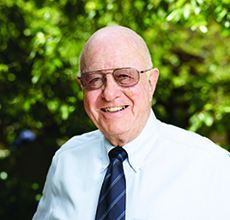“Skin-to-skin time right after delivery can be a wonderful, strong start for both mother and baby,” says obstetrician Dr. Susan Crowe, a clinical associate professor of obstetrics and gynecology at Stanford School of Medicine. Which is why, whenever possible, Crowe advocates that newborns be placed immediately upon the mother’s abdomen at delivery. (A recent study published in JAMA Pediatrics shows that there may be benefits to waiting, even a few minutes after delivery, to sever the umbilical cord.)
“After the cord is cut, the baby should be moved up to the mother’s chest,” says Crowe. It’s something traditional cultures have always done instinctively and is now understood scientifically as an incredibly beneficial way to welcome a baby for both mother and child. “The skin-to-skin contact causes a release in oxytocin—known as the ‘love hormone’—in the mom. It helps the uterus contract, which reduces bleeding, and also warms up the mother’s body, which comforts the baby and results in less crying and lower rates of hypoglycemia,” Crowe explains.
“Skin-to-skin contact causes a release in oxytocin–known as the ‘love hormone.’”
The rush of oxytocin not only makes Mom a super warm and cozy place for a newborn to nestle, it also enables mothers and babies to recognize each other’s unique scent. In addition, it triggers the newborn’s instinct to find and latch on to the breast—something that everyone thinks is so easy and instinctual for both mother and child, that is, until the moment arrives and the awkwardness is all too real. A 2012 study published in Neonatology showed that 95 percent of mothers who experienced skin-to-skin contact with their newborns were breastfeeding exclusively 48 hours after delivery, and 90 percent continued exclusive breastfeeding six weeks later; yet another reminder
of just how important our hormones are in determining how we function.
Because more and more research is showing how crucial that initial connection and communication are for the well-being of both moms and babies, some hospitals are working to make this type of contact possible even in the case of cesarean sections. “For women who planned to have a vaginal delivery, an unexpected change of plans can result in a huge sense of loss,” Crowe says. “Being able to hold their baby can take some of that sting out.” Lucile Packard Children’s Hospital Stanford, where Crowe serves as the director of outpatient breastfeeding medicine services, is adapting its cesarean procedures so that moms and newborns can have that bonding moment while still getting the attention and recovery assistance they each need.
For premature babies that require medical attention right after birth, immediate skin-to-skin contact may not be possible. “But as soon as they are stabilized, we strongly encourage parents to do it,” says Dr. Philip Sunshine, emeritus professor of pediatrics at Stanford Children’s Health. Sunshine conducted the benchmark studies on the benefits of skin-to-skin contact for preemies, way back in the late 1960s. Now, skin-to-skin contact is part of daily protocol in the NICU. “We think it’s so important for healthy development,” says Sunshine.
And “when Mom is the one requiring more intensive medical care, her partner should be wearing a loose-fitting or button-up shirt so that the baby has easy access to another chest,” says Crowe, since studies suggest that newborns benefit from skin-to-skin contact with either parent immediately after delivery. “This might not be the standard in delivery rooms everywhere, but it can be accommodated if you make it part of your birth plan.”
Of course, physical affection and connection through nurturing touch don’t—and shouldn’t—stop after leaving the hospital. Regular infant massage provides lasting benefits for the baby and parent. And we’re not just talking about moms. Partners, who sometimes feel less attached to their children in the beginning than mothers do, can also reap huge rewards. A 2011 study published in The Journal of Perinatal Education found that partners who practiced infant massage experienced significantly less stress than those who didn’t. And all the “work” that’s required is the pleasant task of stroking and cuddling a baby.
Partners who practiced infant massage experienced significantly less stress than those who didn’t.
As your child gets older, this regular skin-to-skin contact can evolve. Encourage your toddler to crawl into bed with you for a morning cuddle, make back rubs part of the tucking-in process for your 6-year-old, or give your less touchy-feely tween the occasional foot or neck massage while watching movies together at home.
|
|

Dr. Philip Sunshine, emeritus professor of pediatrics at Lucile Packard Children’s Hospital Stanford, has saved 40,000 babies over his 60-year career. Recognized as one of the creators of neonatology, Dr. Sunshine and his innovations have forever changed newborn care.
Decades ago, when Sunshine was starting out, doctors were taught to isolate premature babies in a sterile room. Dissatisfied with this approach, Sunshine and the team at Stanford began conducting experiments where parents were allowed into the nursery with their preemies, and found that the infants benefitted from being held.
Now, family time in the NICU is a common practice around the world. Sunshine was also part of the team that first implemented neonatal intensive care, ventilation, and IV nutrition. Before then, babies born at less than 28 weeks had a mortality rate of close to 90 percent, says Sunshine, and today, more than 90 percent of them survive.
At 85 years old, Sunshine is no longer pulling all-nighters in the NICU, but he still spends at least 17 weeks a year caring for patients in the hospital.
“I have the stamina and the enthusiasm for the work,” he says. “So there’s no reason to stop.”